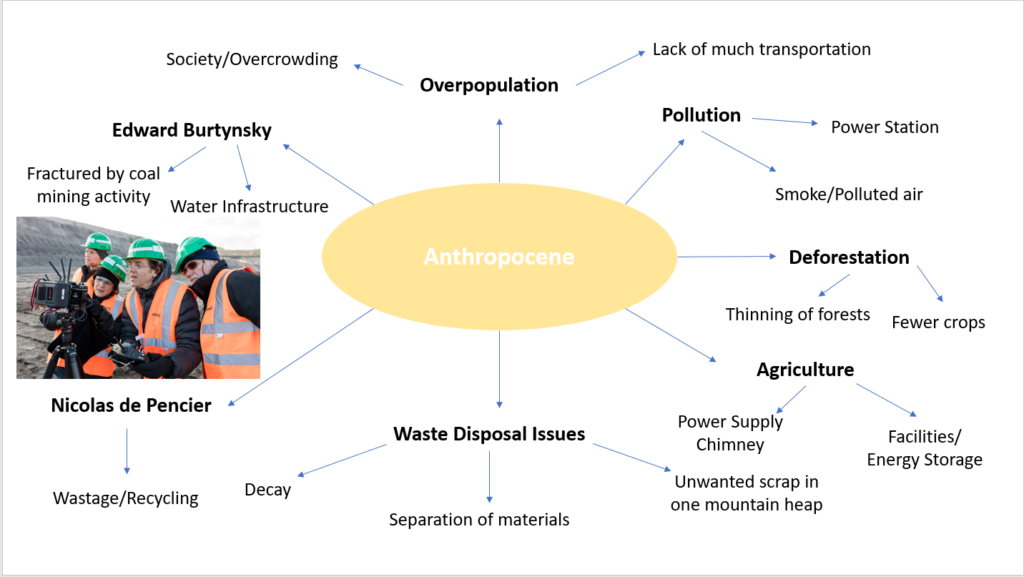



What is it?

It is used to describe the time where human being simply had a real impact on our planet. Whether our planet is part of a “new geological age” or a “complex, global system”, the evidence is clear through just observation.
Some may think that it is a reaction due to the topic of “climate change”-regarding the warming of our atmosphere, air and oceans through the use of fossil fuels. The age of humans is about much more than this. Awareness of the current state and the effects of actions (ours especially) is a key factor in the “Anthropocene”.
Natural causes have been triggered e.g asteroids, volcanic eruptions and earthquakes etc. (Agriculture, urbanisation, deforestation and pollution have caused extraordinary changes on Earth) This can also be due to the “mass extinction events” in the planets history where the vast “swathes” have been wiped.
The “mass extinction events” have been happening frighteningly quickly as the species are happening at a significantly faster rate they they have for “millions of years before”.
Photographers are exploring this concept as it can rethink and overcome this “separation of humanity from the environment “as well as to “make us reflect on the climate urgency” and “generate awareness environment and responsibility with the planet that contains us and that we inhabit” (as mentioned before about awareness of this situation).
The photographs which are taken with this theme of “Anthropocene” are beautiful yet ugly at the same time, whether they are the stereotype fit for whether they are pretty or not, the photographs is very appealing to the eye as the photographs look very interesting and engaging for the viewer as they almost suck the viewer in the image as there is such much yet so little going on.
They aren’t solving any wide-world problems they are just making these situations aware to the public and spreading these outlooks widespread.
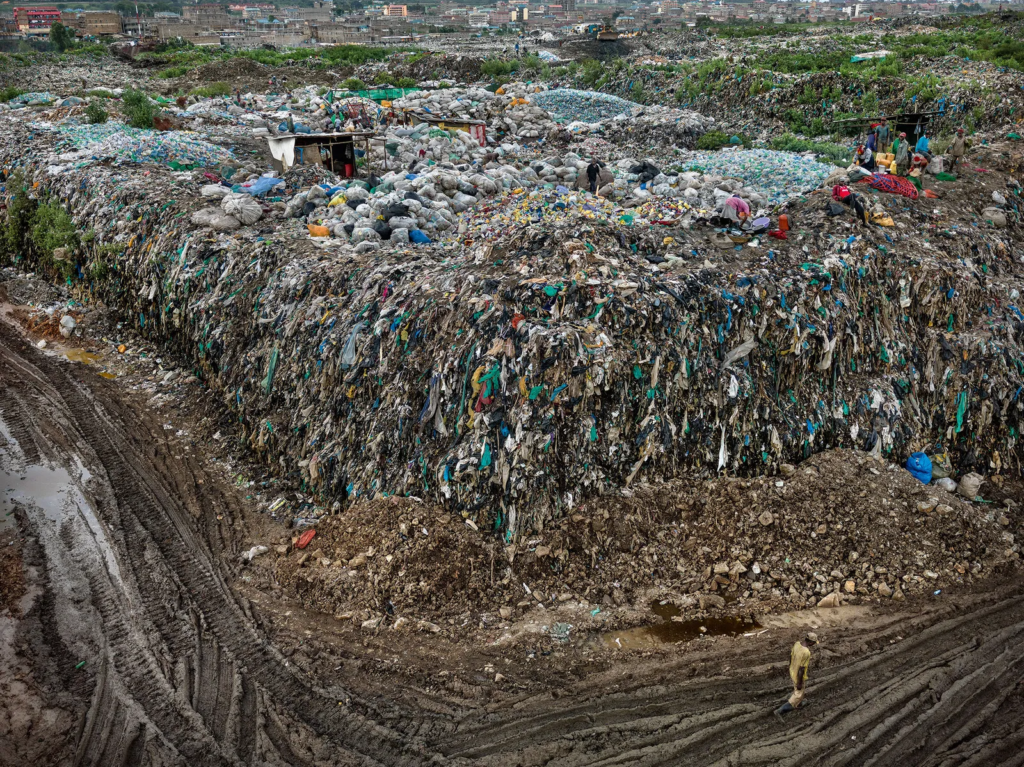
Photographers that focus on this theme are Edward Burtynsky, Jennifer Baichwal and Nicholas de Pencier. In terms of Edward Burtynsky, his work is the most favourable as they look very complex and present the right amount of awareness about the catastrophises that have raised. I like the photographs that he takes in terms of the rubbish and landfills especially as it really project the extensive amount wasted and thrown onto the piles and piles present in the world scale. The photograph only shows a smaller quantity of a larger and more prominent problem as well as scale.

In his photography expenditure Edward followed from “quarries in Portugal to rice fields in China to oil refineries in California”. Edward publish a book named “AFRICAN STUDIES” which “focuses on a region he calls globalism’s “final stop”: sub-Saharan Africa”. In his photoshoots he captures the impact of industrialisation on the landscapes of Kenya, Nigeria, South Africa, Tanzania, Ethiopia and more from a higher point (birds eye perspective) such as e.g. aeroplanes, drones and helicopters etc.
His camera can document the “stunning detail” and “vibrant hues the toll of human intervention on our planet” from the salt and sapphire mining to plastic recycling and dams.
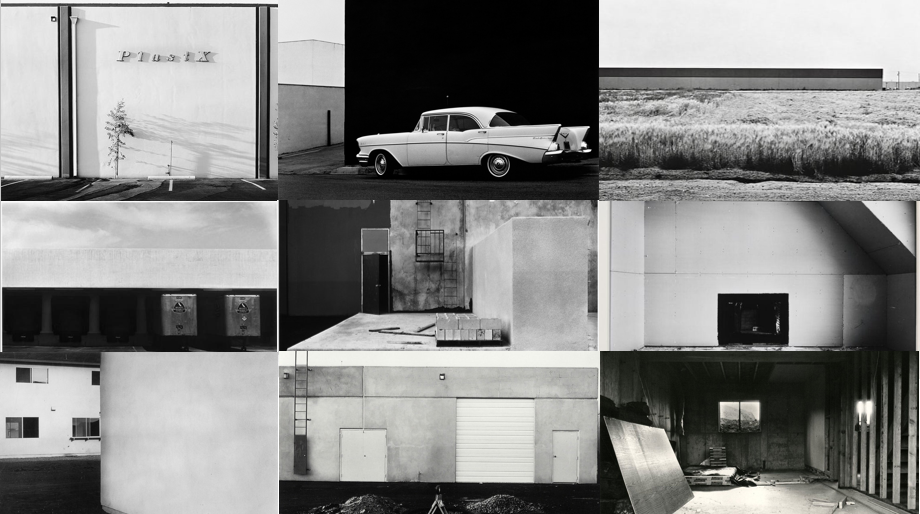
Introduction to Lewis’ Life:
Lewis Baltz was (born in California, Newport Beach 1945) a freelance photographer in California and he taught photography at various institutions: including the California Institute of the arts, the University of California as well as Yale etc.
Lewis has been based in Europe since the mid-80s and travels extensively. The photographer produces images in series that are focus on a particular theme or geographical area. Lewis usually publishes these photographs in book form.
Lewis in terms of The New Topographics:
His work, like that of other associated with the western approach of The New Topographics, he challenges the 19th century tradition of the American landscapes photography represented by Timothy O’Sullivan, Carleton Watkins as well as William Henry Jackson by presenting a less innocent view of the landscape.
His perception and perspective of the landscape reveals that the effects of the 20th century culture and suburban development on the nation’s topography.
Baltz focused his camera on the unassuming green spaces as well as architecture of tract housing, office car parks and industrial parks.
He as part of the New Topographics movement, through his work he shared an aesthetic that drew on contemporary art and rejected the romanticism of traditional landscape photography.
I like Lewis’ work as it is straightforward but very effective, I believe that the simplicity of the image and the idea that it’s empty presents this abandonment clearly and the fact that there is no life, no people or established buildings as during the time the theme of new topographic raised poverty, people moving to new places and leaving behind the old was common during the era after the world war.
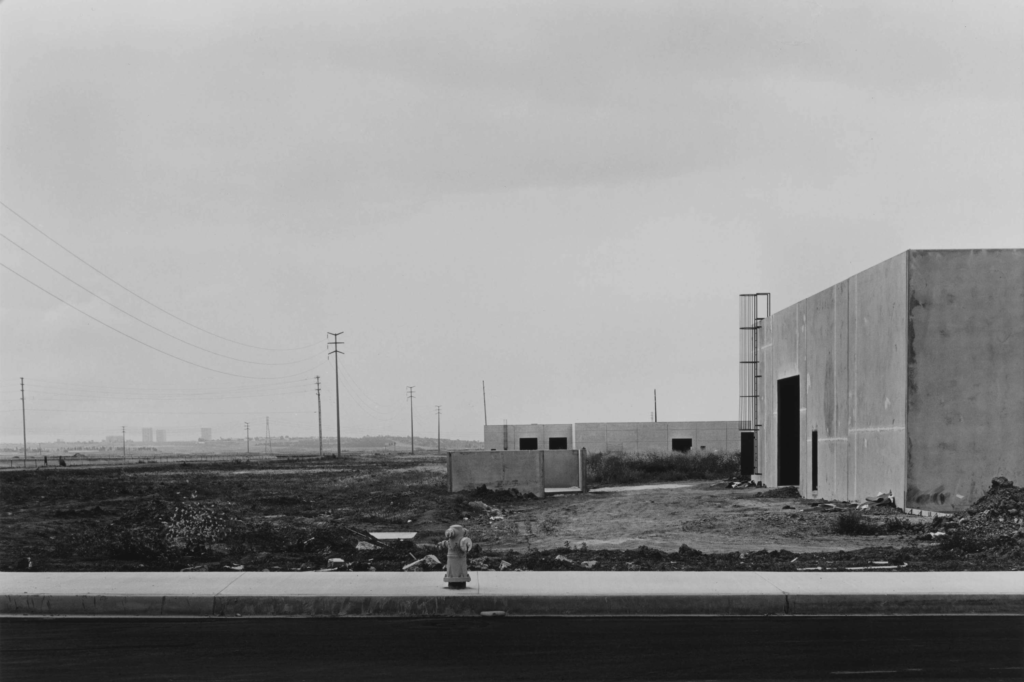
He once said:
“I was living in Monterey, a place where the classic photographers—the Westons, Wynn Bullock, and Ansel Adams—came for a privileged view of nature,” he once said of his work. “But my daily life very rarely took me to Point Lobos or Yosemite; it took me to shopping centres, and gas stations and all the other unhealthy growth that flourished beside the highway. It was a landscape that no one else had much interest in looking at.”


Contact sheet linking to photoshoot:
For this photoshoot I decided to present my contact sheet of photographs I took on the walk around from Havre des pas beachy and old contrasting to modern building textures, as well as the more machine-like buildings around la Collette like the jersey electricity centre, the disposal centre and the jersey marina where the viewpoints of the man made boats and structures of buildings contrasts with the nature and the ocean itself, this collision of the “New Topographics” is evident in my photographs presented below.
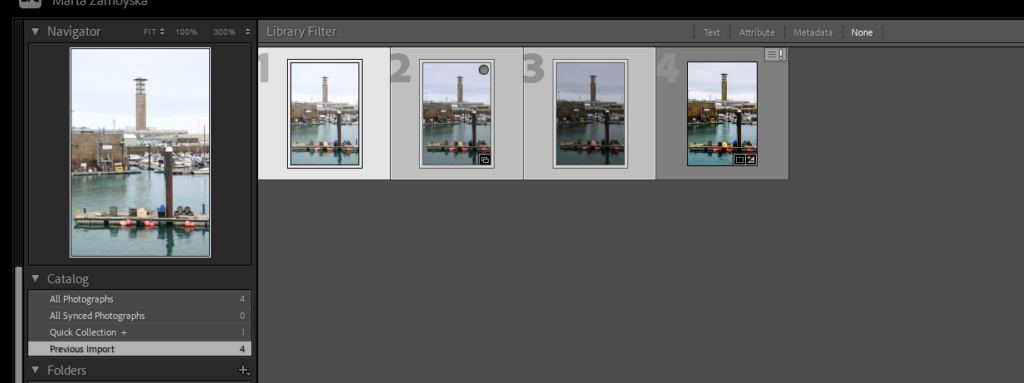
In the screenshot presented above I have demonstrated the HDR merging of my photographs specifically the one where the marina is present with the colourful and the nature as well as the La Collette Chimney being present in the photograph above.
I believe that the use of this HDR merging makes the images look a lot more vibrant and modern as it makes them appear alive, bolder and more saturated the combinations of the images together of the landscapes.

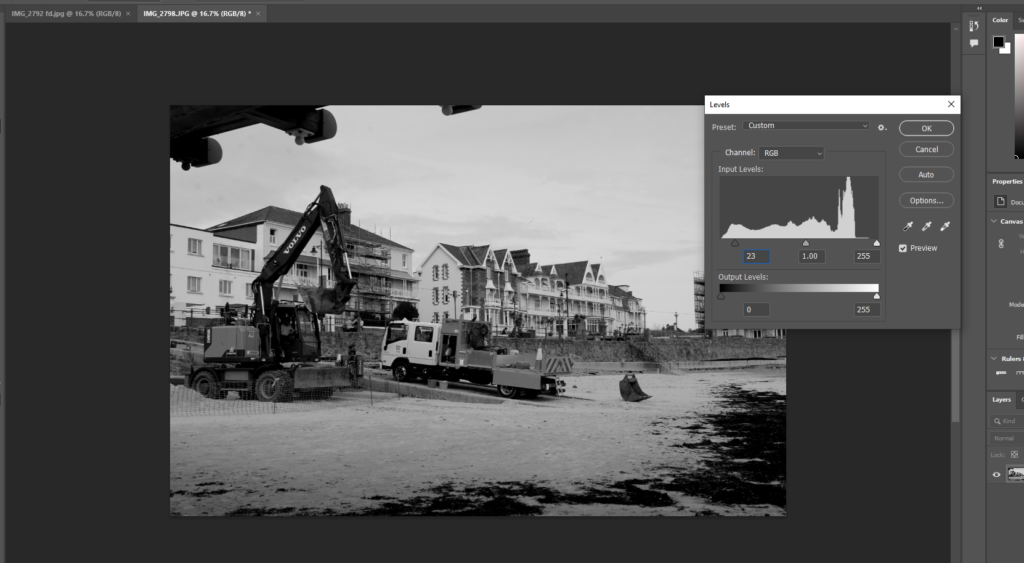
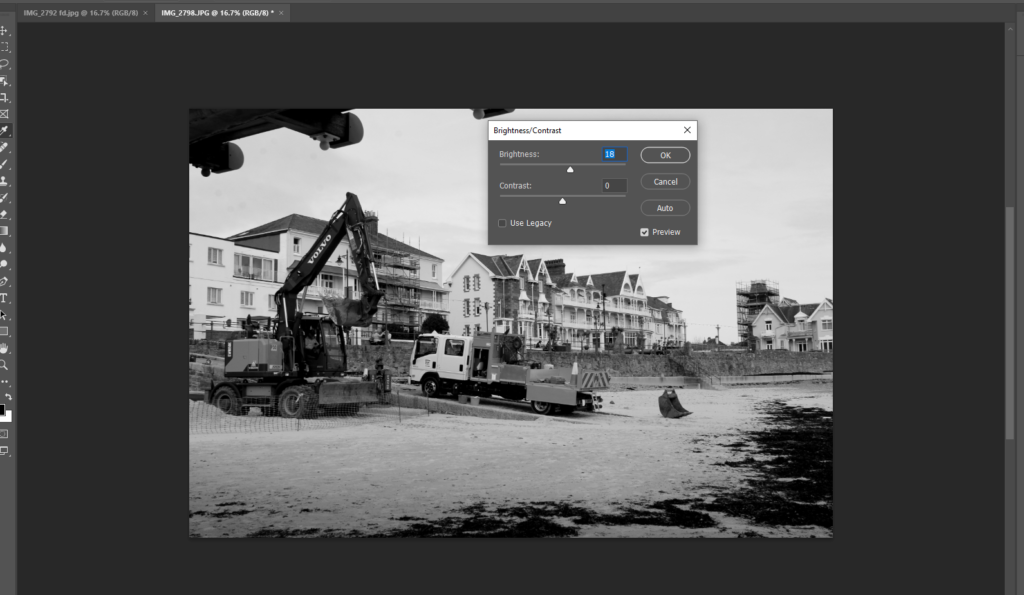

How I edited the photograph through photoshop:

In the photograph above I tried to include the machinery on the beach as well as the buildings and strictures in the background. The lower and higher part of the image challenges these ideas of textures in “The New Topographics”. The idea that in new Topographics the contribution of the man made and natural elements in one image presents the change of architecture and general human activity change. The idea that “ecosystems are damaged or destroyed…suburbia expands, encroaching ever more on the last refuges of the original, pre-European invasion landscape”.
New Topographics Photographs:
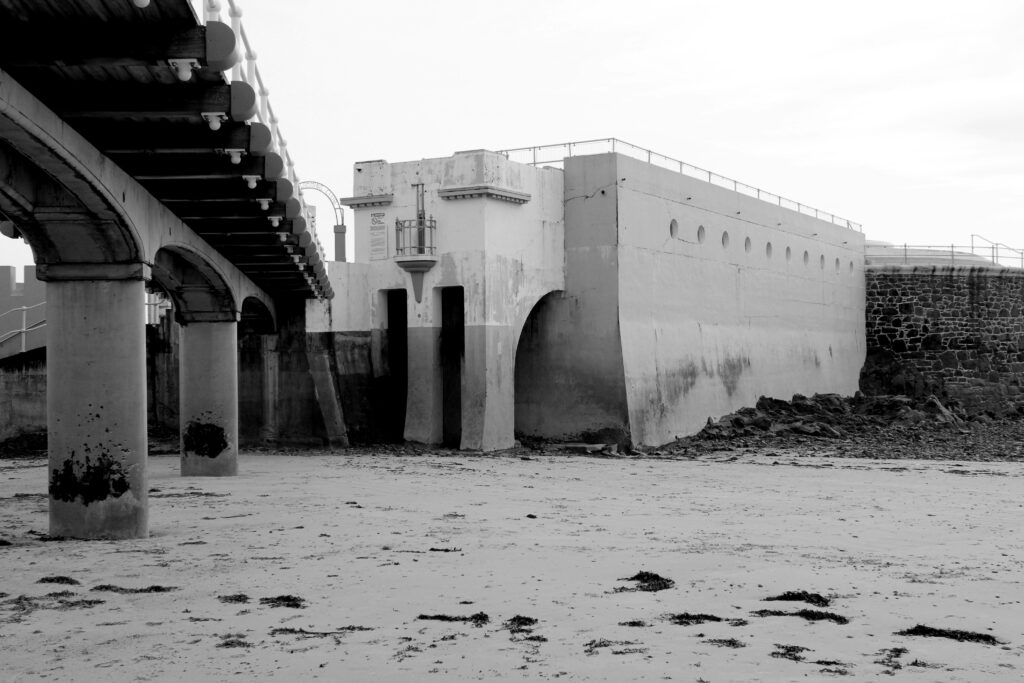
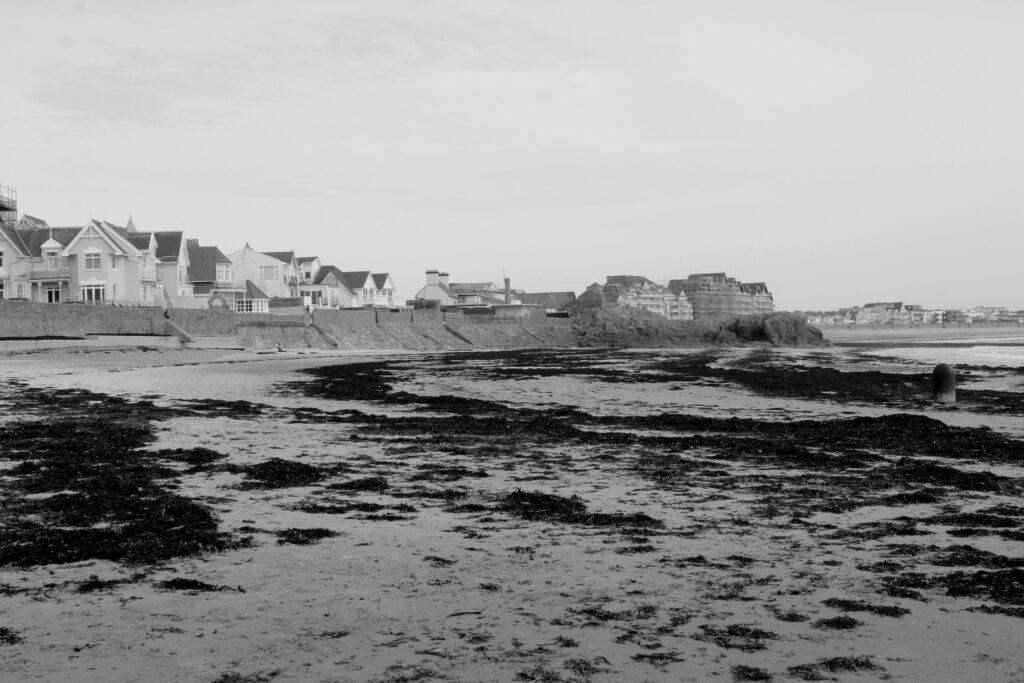
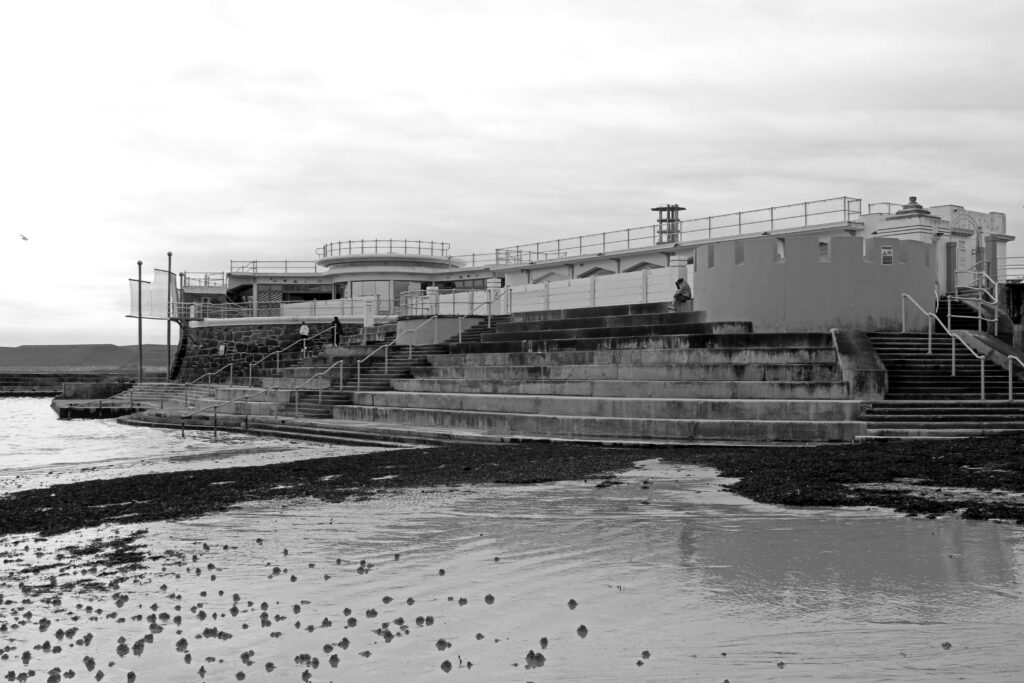
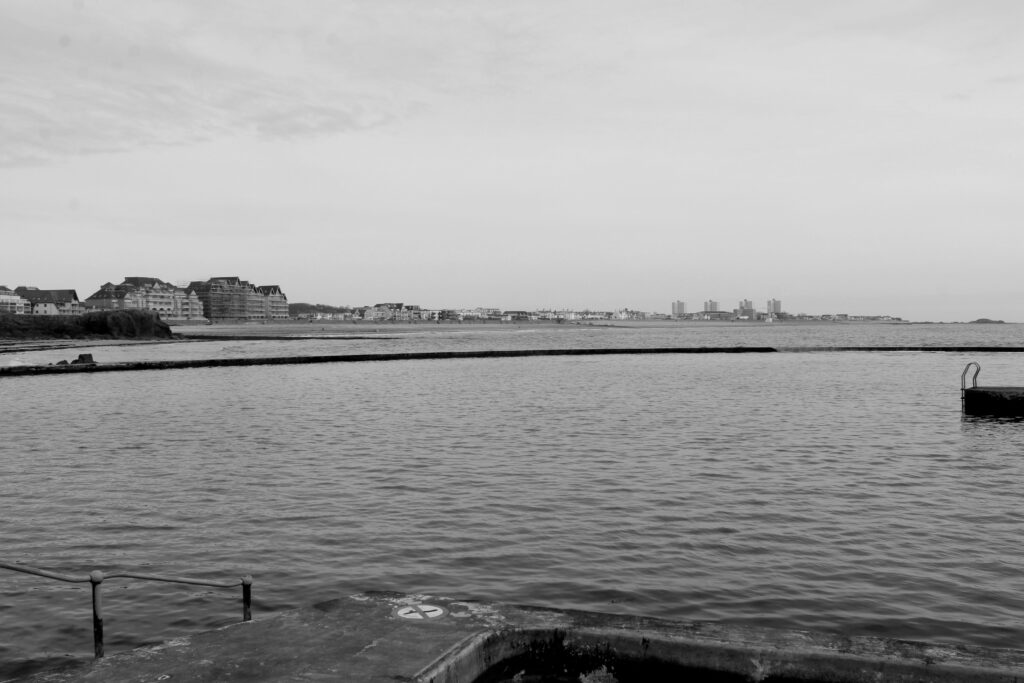
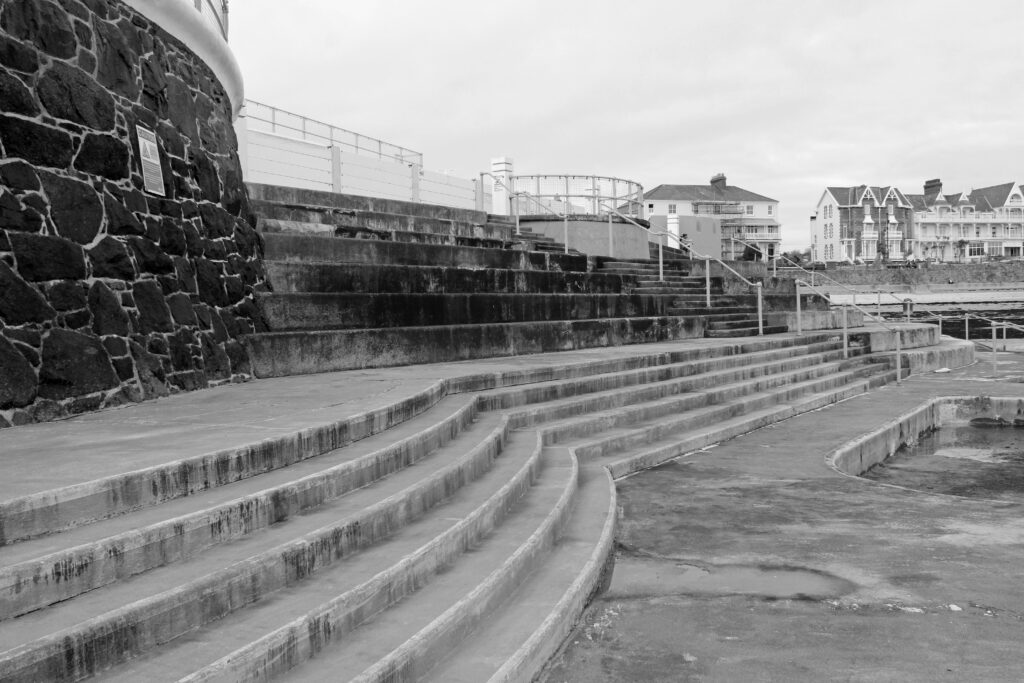
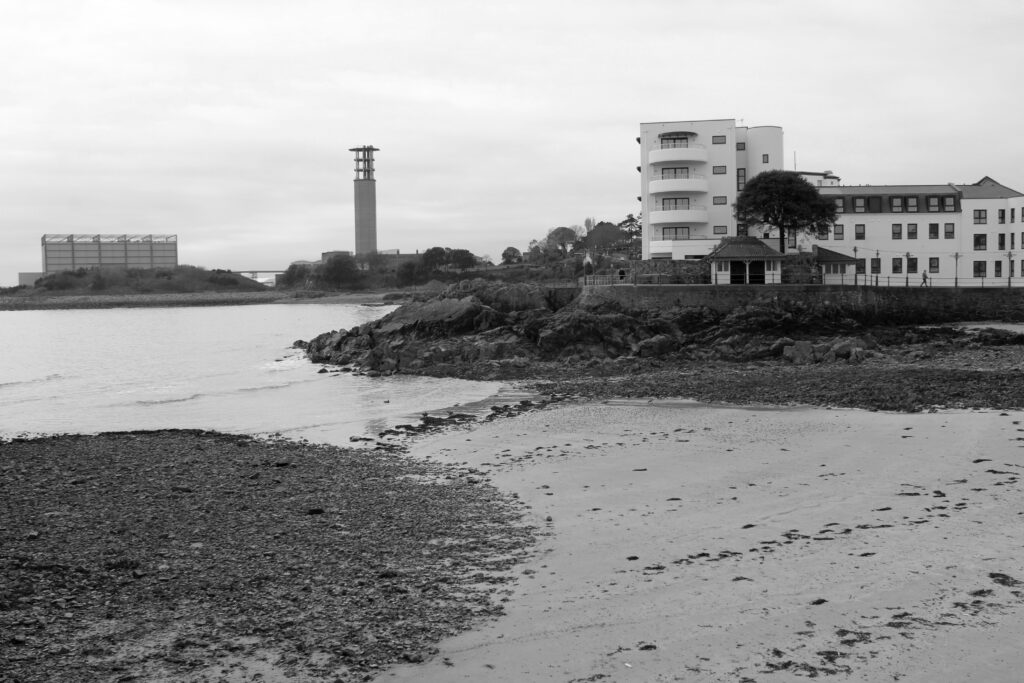
In these images above I took I focused where the contrast between again ” natural and manufactured” features as well as when the darker and brighter/lighter tones appeared in the photograph. From the sea’s waved pattern in the cracks and creases in the Havre Des Pas swimming pool structure to the appearance of finish of the stairs presented going down to the swimming pool.. The clear slit between the darker and light areas makes the image appear more interesting to look at and looks engaging as it looks unconventional; the way the tonalities are positioned in some of the photographs for example the first image and the second to last image.
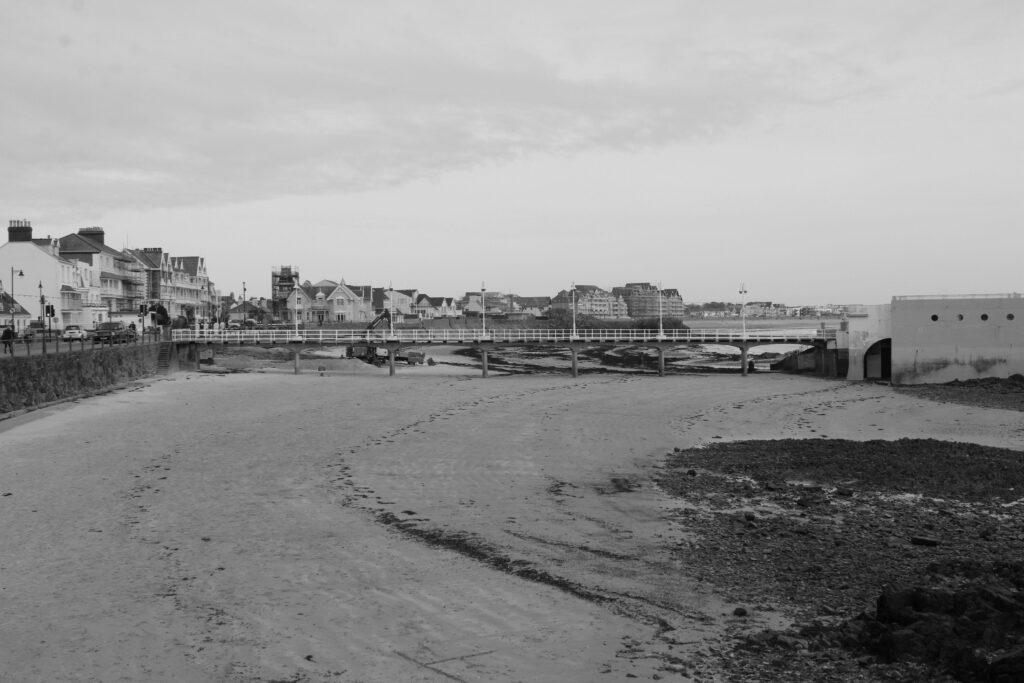
In this photo I wanted to show the composition of the image where a good 3/4 of Havre Des Pas is presented including the direction of the clouds presented in the top of the image itself.
I believe the image presents this landscape well, despite the image being in a monochrome tone. I think the clouds at the top work well coming from the left corner direction.
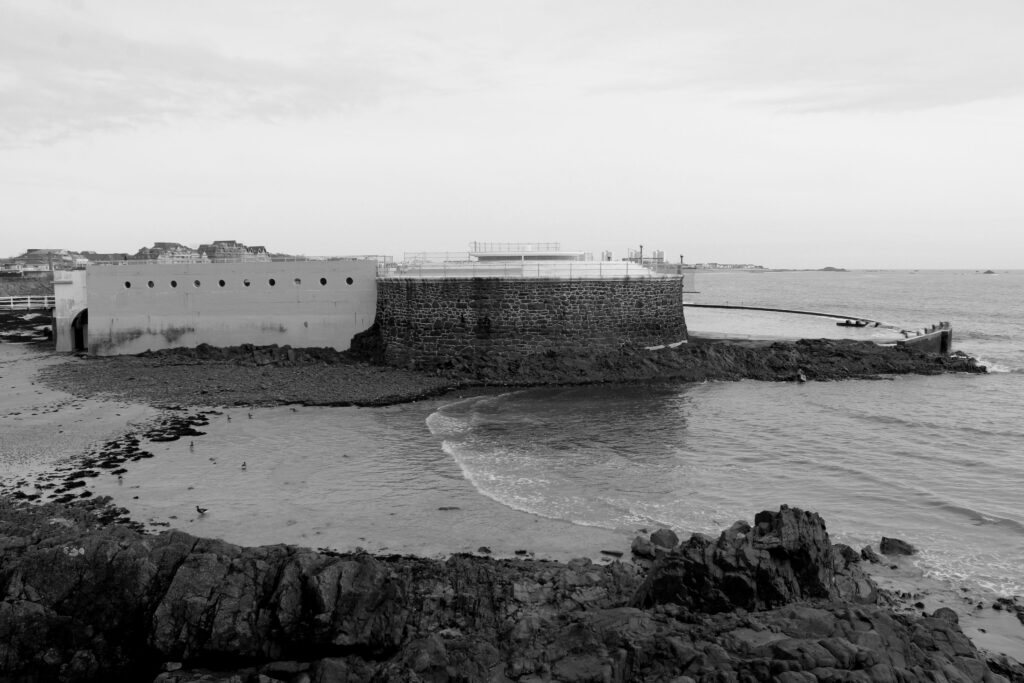
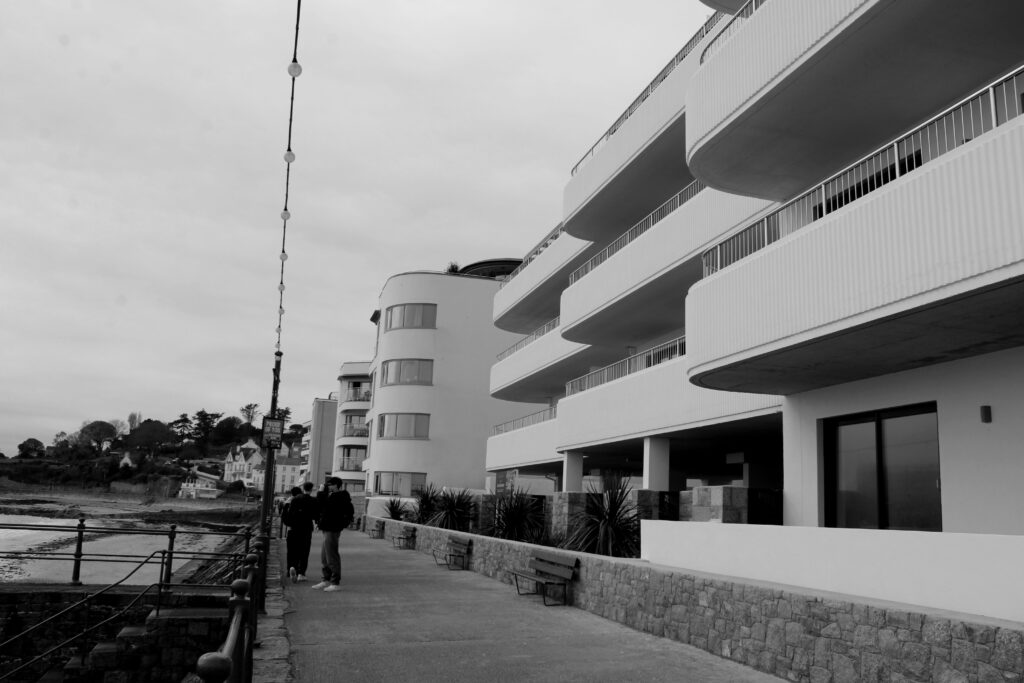
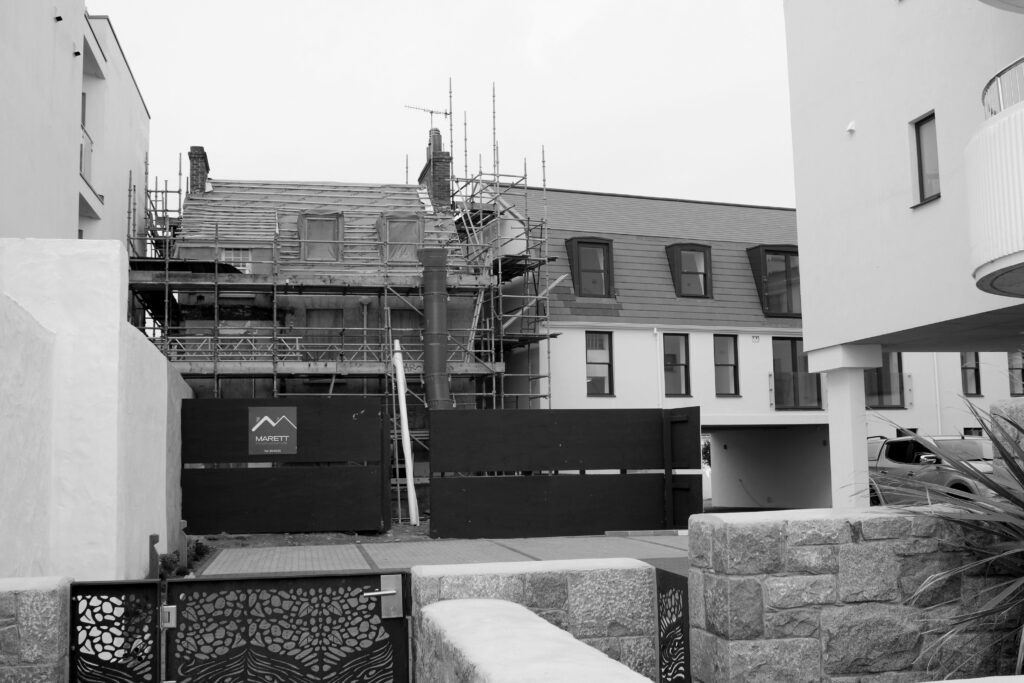
In the photograph especially on the left I feel as though the tones are presented well like mentioned before the clear contrast between the much darker textures and the much lighter ones. I n many of Lewis Baltz photographs the influence of human activity and control/reflection is clear, I tried to present this in my own photoshoot.
The Leica camera which was used by Lewis himself to shoot his photographs whereas to take my photographs I used a canon dslr camera. I aimed to take inspiration from his work despite using the canon dslr, the Leica has ” better results” and is “far easier/faster to shoot”. (https://www.kenrockwell.com/leica/m9/sharpness-28mm.htm)
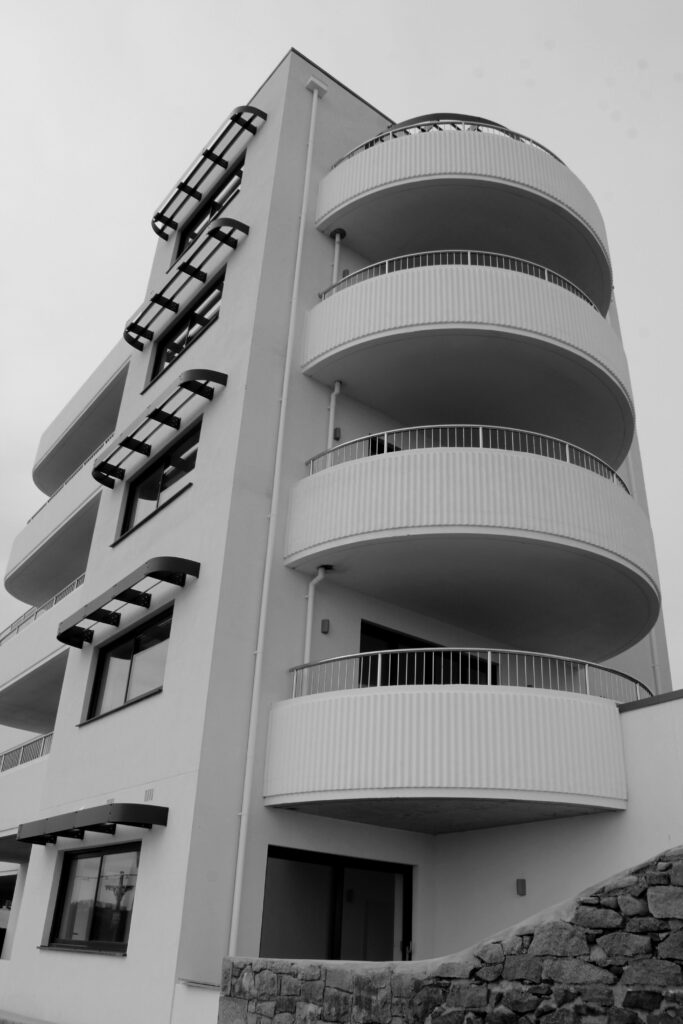

In the photographs above I looked specifically at the textures and the buildings and the difference between the modern buildings and for example the contrast between the newer and older building having construction.
In the photograph on the left presents the building with many different layers and the shadows presented below each layer, I think this plays well into the photoshoot as the different tones are highlighted as well as the rock texture in the bottom right corner.
I like the photograph specifically on the right especially as there is an evident split of colours and nature vs urban scenery. Most of the darker tones are presented on the right side which looks similar , the split, to Lewis Baltz photographs where the black and white contrast is clear and looks very sharp as well as clean.

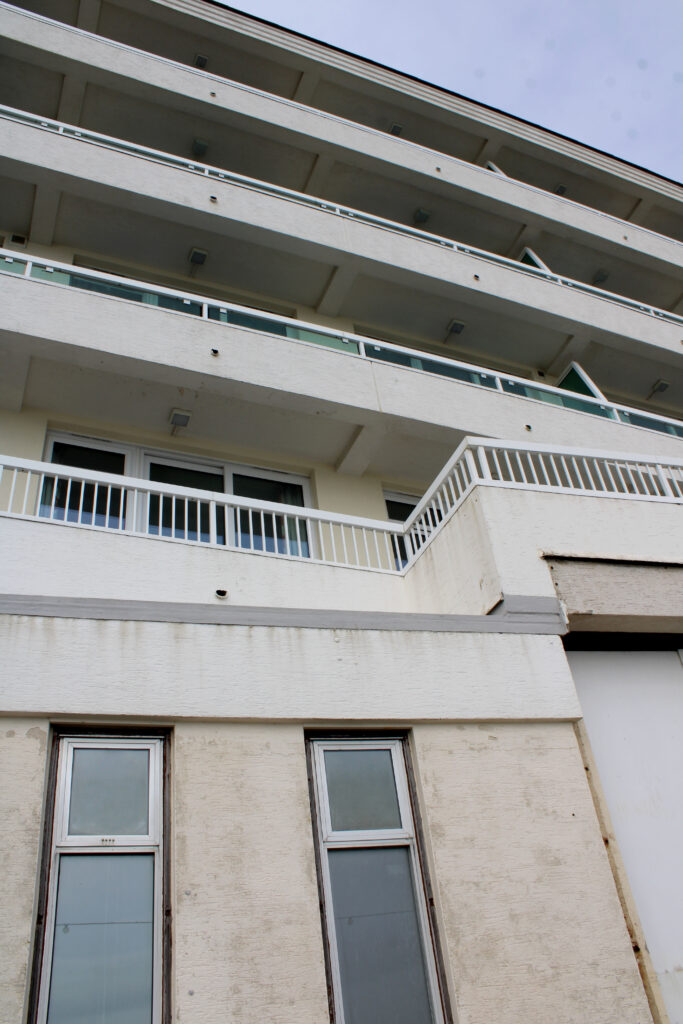
In the photograph above I think the different textures work well. The building looks a bit worn out and the colour looks plain, no vibrant colours show up so the image fits with the theme of new Topographics and the less interesting landscapes.
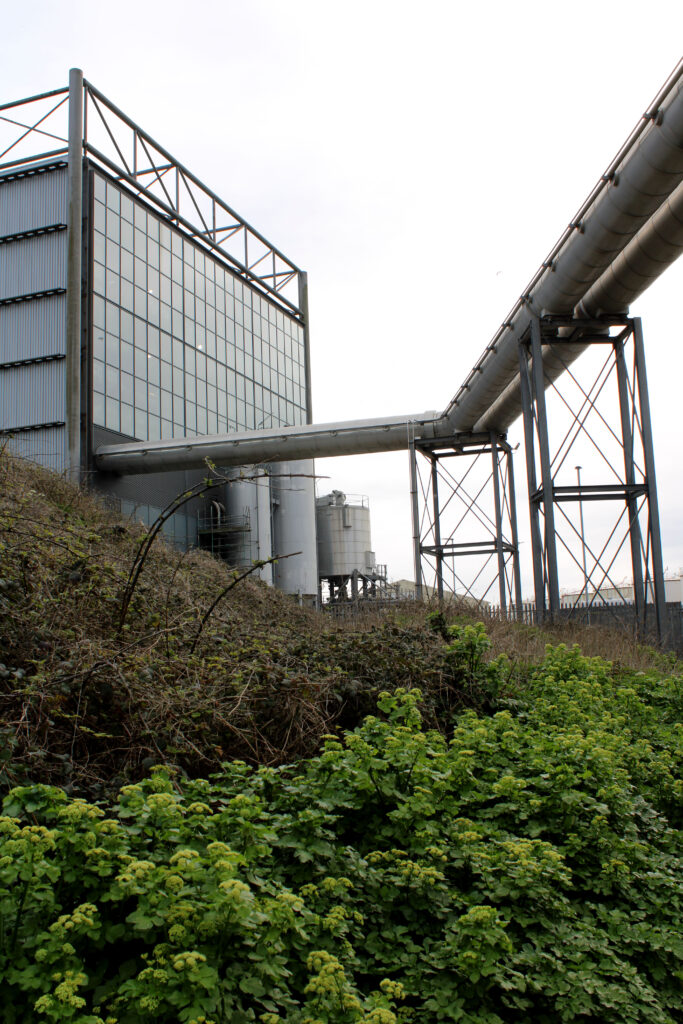
In the photograph above I think the industrial elements play a part alongside with the nature and greenery. The contrast looks interesting as it’s almost split, the juxtaposing features look unusual as below in the lower part of the image it appears brighter than the top half creating the effect and opposition of life vs man made clear.
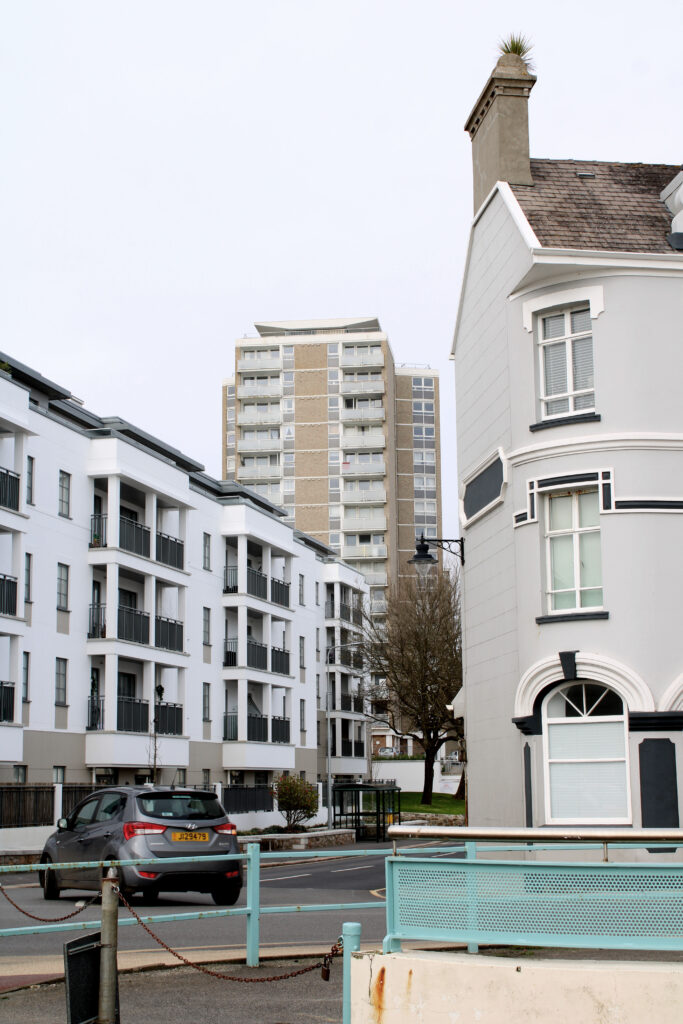
In the photograph above I think that the contrast between the different buildings looks quite interesting with the distinct appearance of each one, the landscape differentiates as the three different appearing structures are all in the frame and look unique as they all have different window panes, different structures, shades and heights as seen above.
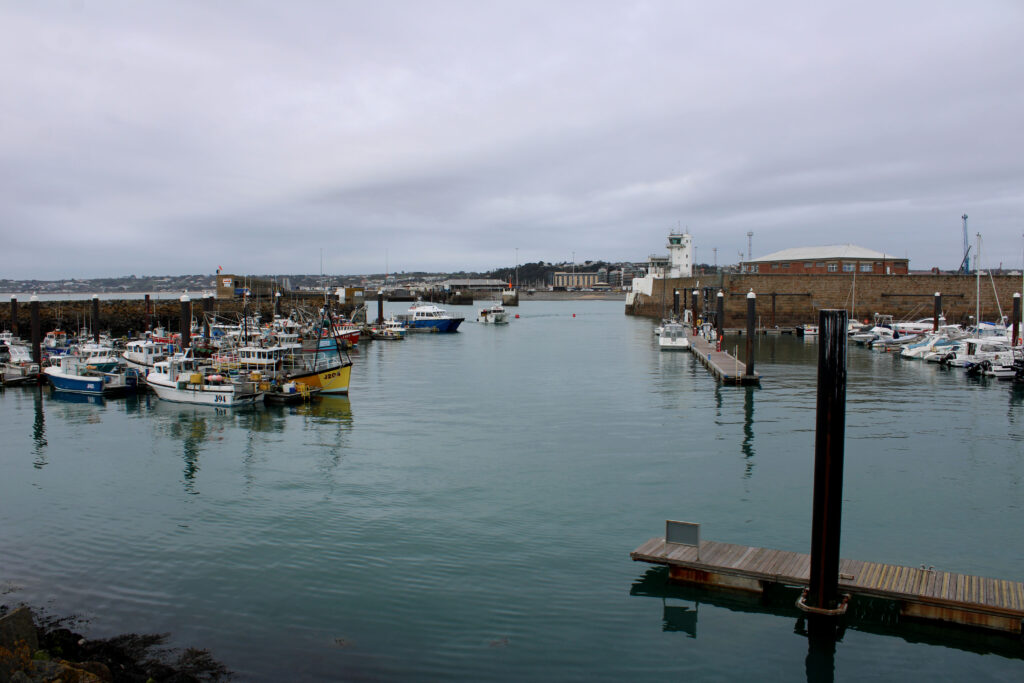
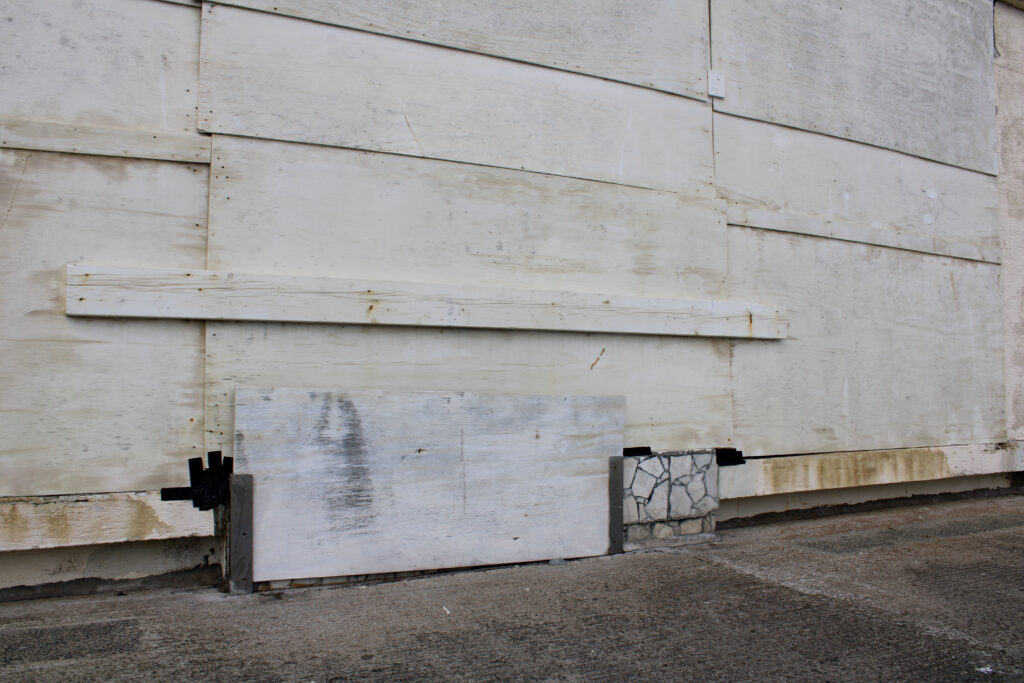
Following the topics of New Topographics I think that the two images above present it well, with the first image at the marina, it presents the water with the land in the background as well as the boats either side of the image framing it an interesting element.

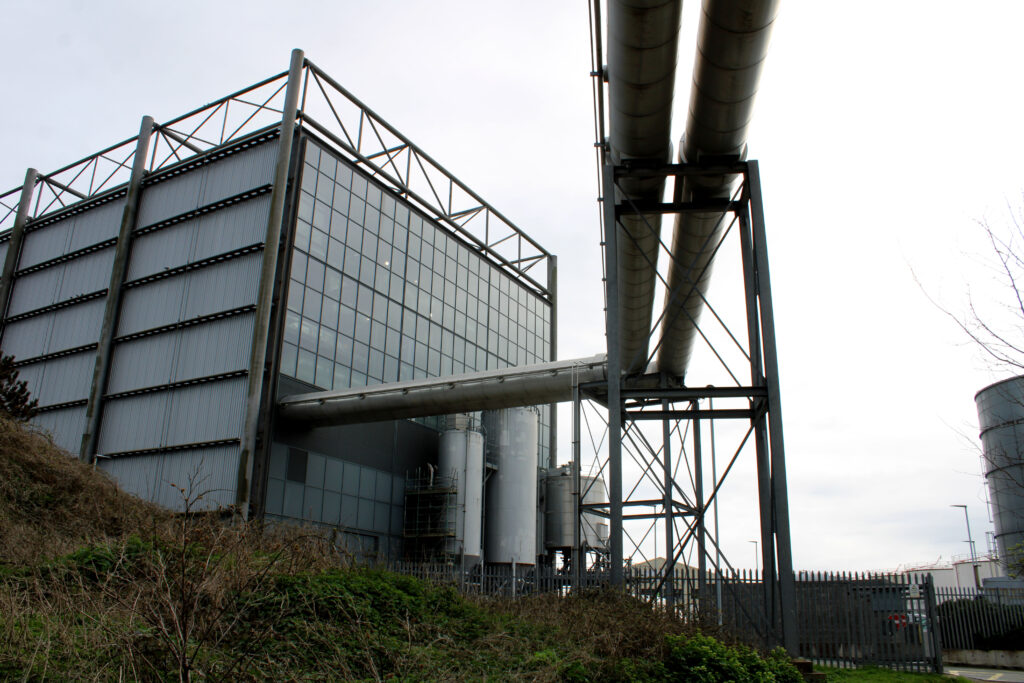
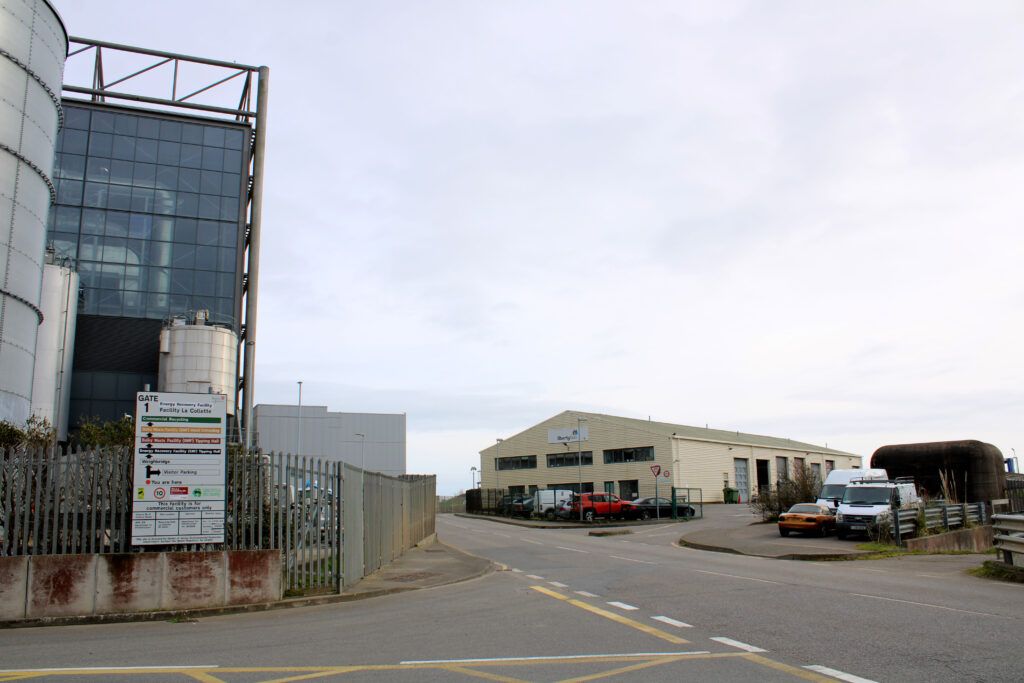


What was The New Topographics?
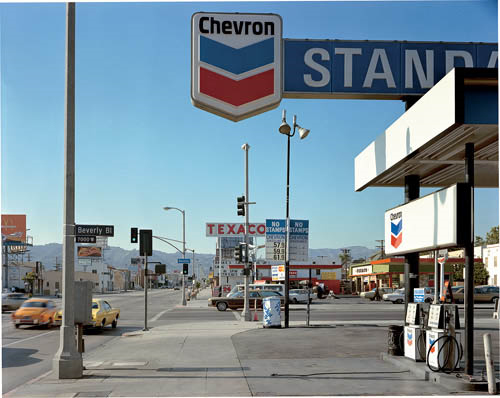
The New Topographics was a term created by William Jenkins in 1975. This term described American photographers (including Robert Adams and Lewis Baltz). These photographers had a similar banal aesthetic (art described such as things than are unoriginal, obvious and boring in the general public eye). These “new Topographics” signaled a radical shift away from traditional depictions of landscape, topography is always changing and being reshaped through the power of weathering, erosion as well as deposition. The Topographics caused an emergence of an absolute new approach to the landscape as well as it demonstrated the influence of Conceptualism and Minimalism in the 1970s in photography.
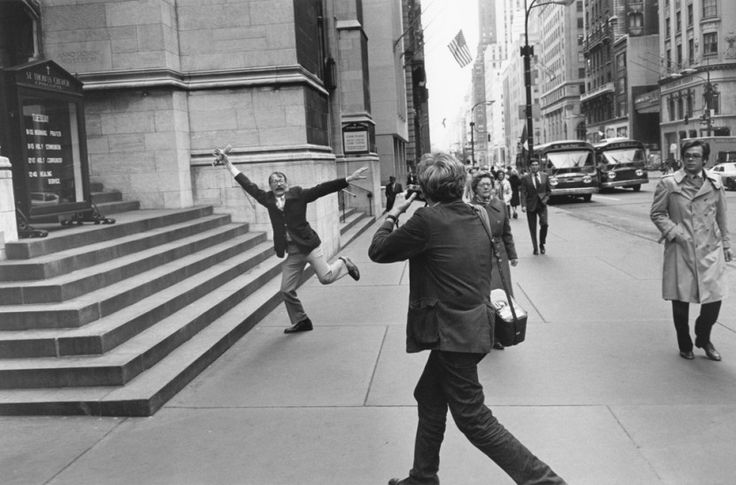
May of the photographers such as Robert Adams, Stephen Shore, Lewis Baltz etc. associated and inspired by the man made, selecting subject matter that was matter of fact. Car parks, the suburban housing and the warehouses were all depicted by the stark severity which looked beautiful, almost in a way how early photographers documented the natural landscapes. The suburban sprawl was also presented as well as the everyday scenes we usually don’t give a second glance at.
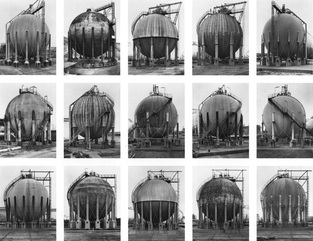
https://www.kierangosney.com/blog/new-topographics-a-short-history
An exhibition at the International Museum of Photography in Rochester, New York which featured these photographers also revealed the growing unease about how the natural landscape was being eroded by industrial development, both highlighting then the natural and manmade features.
The New Topographic reflection was also due to the the post-war consequences. The post-war America struggled with:
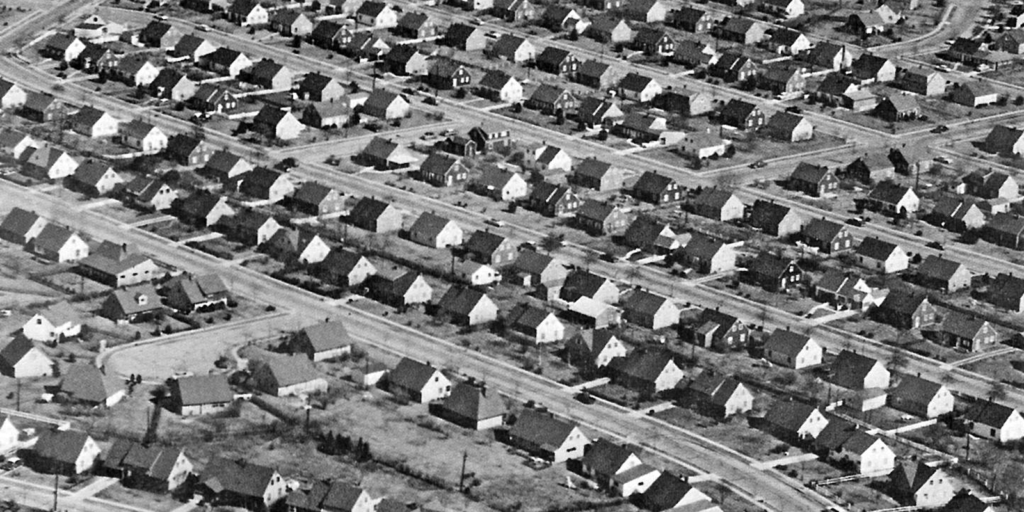
For this Anthropocene Photoshoot, I went around the parish of St Clement and I took I did some research and I really liked images taken By Camilo Jose Vergara so I took inspiration from him and tried to take photographs similar to his.
Camilo José Vergara is a Chilean-born, New York-based writer, photographer and documentarian. Vergara has been compared to Jacob Riis for his photographic documentation of American slums and decaying urban environments. Camilo Jose Vergara`s images strongly show how American cities change over time, he focuses on capturing the neighbourhoods and how buildings streets and communities change over time. His photographs tell stories about urban life and decay showing the difficulties of being in these cities. I really like his type of photography and his technique.

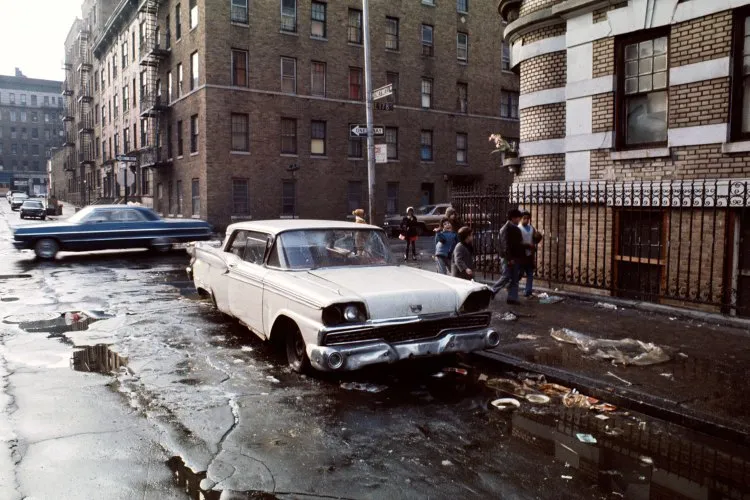

Anthropocene Photoshoot

I think this photoshoot could have been a lot better, however I did get some strong images. I think my images could’ve been taken with better composition and I could have focused more on the framing of the image.
Below are my final best images from this location and Photoshoot, I really like how the first two photographs turned out. I think they are both dramatic and very strong images.

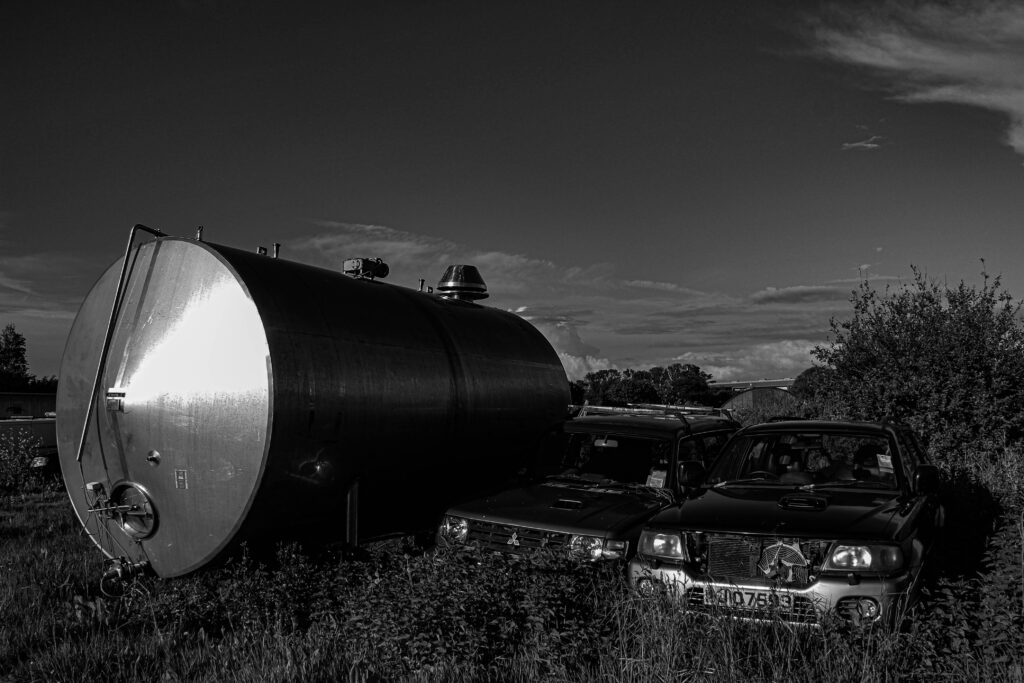





For this shoot I took inspiration from Axel Hutte and Thomas Sutton.
These kinds of thing can be found among nature everywhere and are quite often beautiful. However, they often display a a past of a time before us. A age of humans long gone.
Living in jersey we are surrounded by bunkers and ruins. The best place to see these kinds of things is along the five mile road and on any historical land site, such as Groznes castle.

White flags.


Black flags.

Best takes.

Editing



Final pictures




